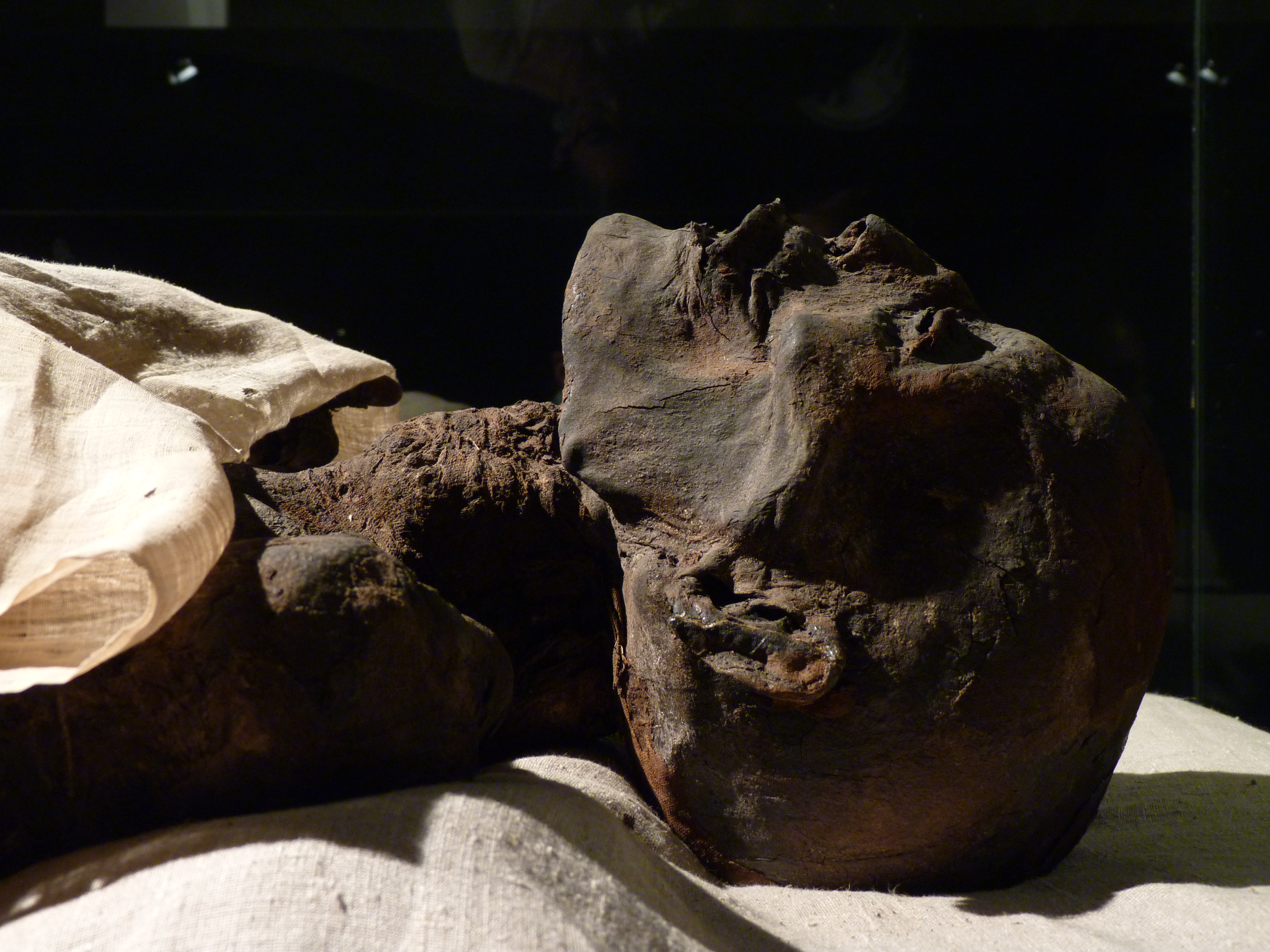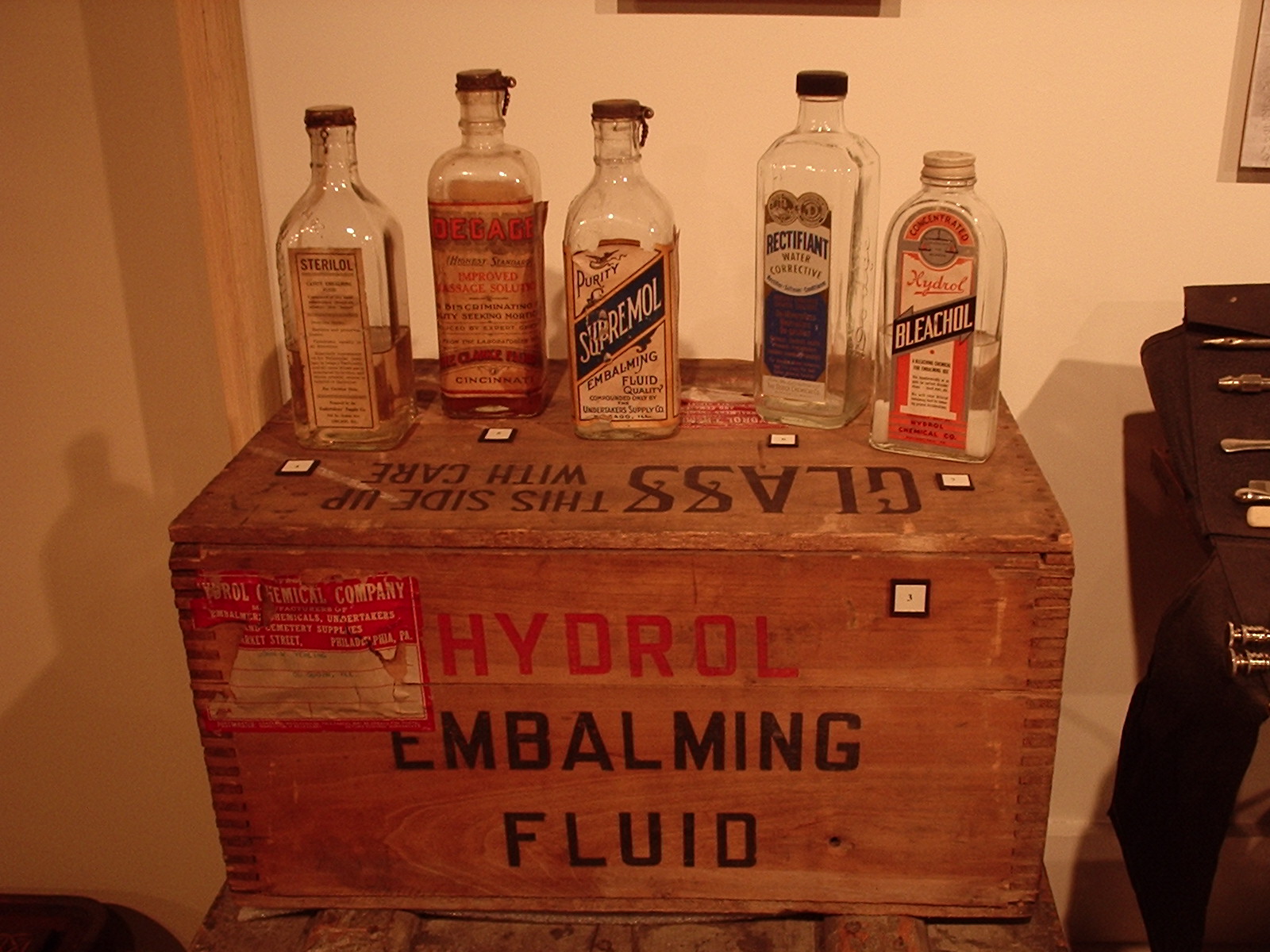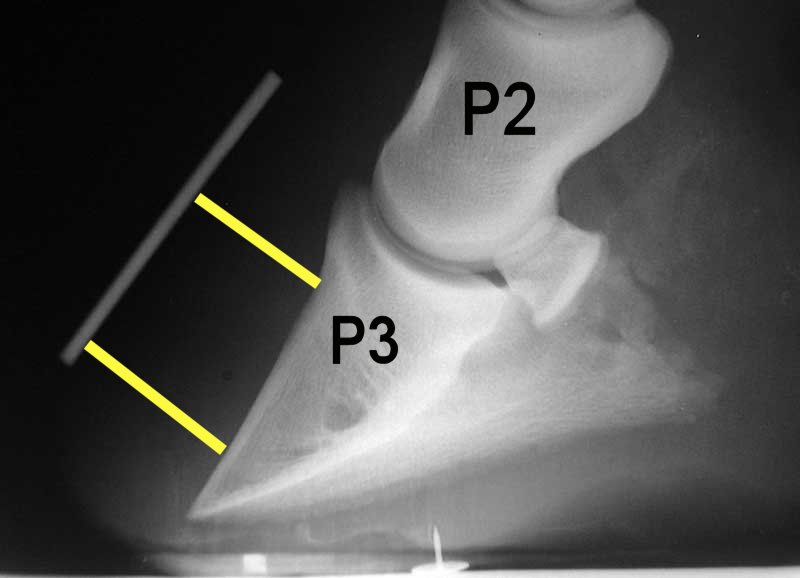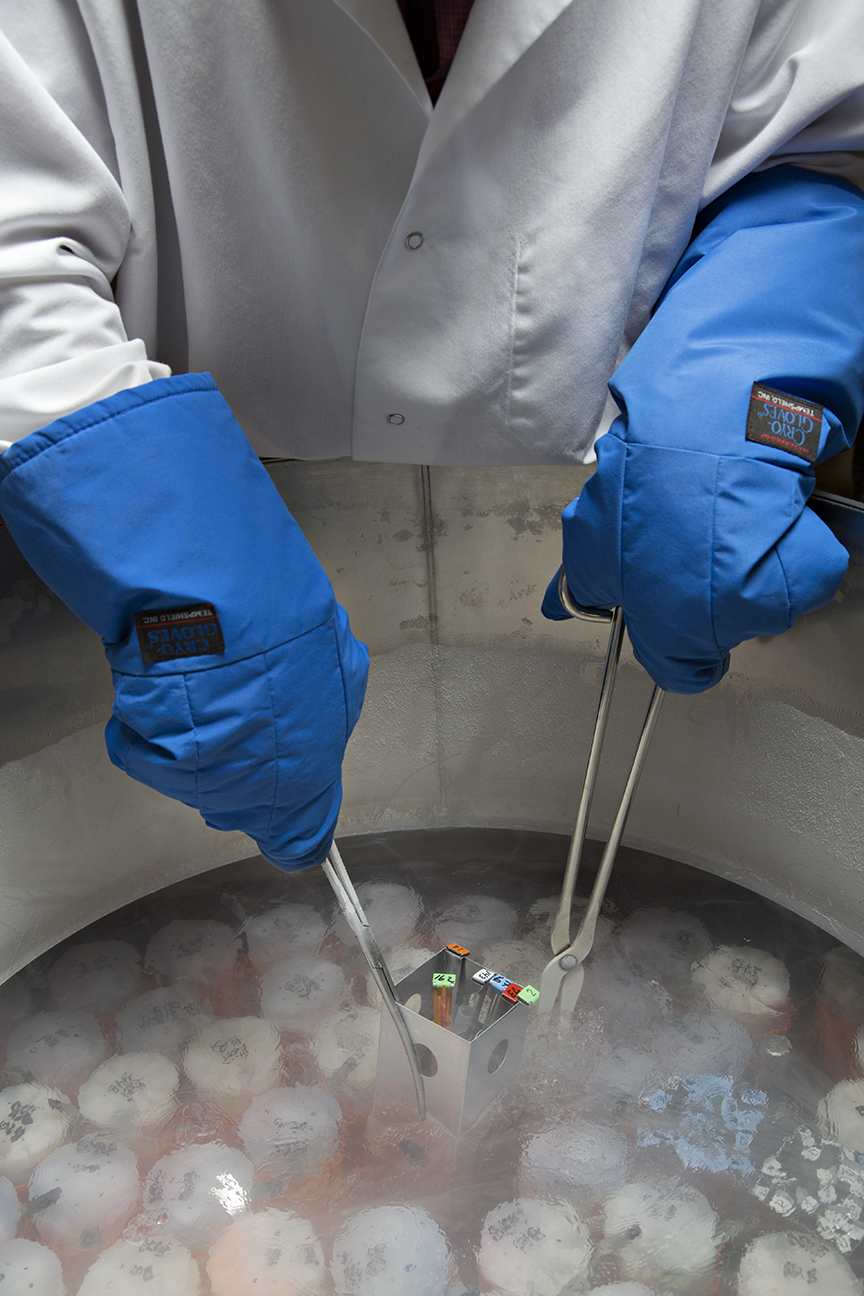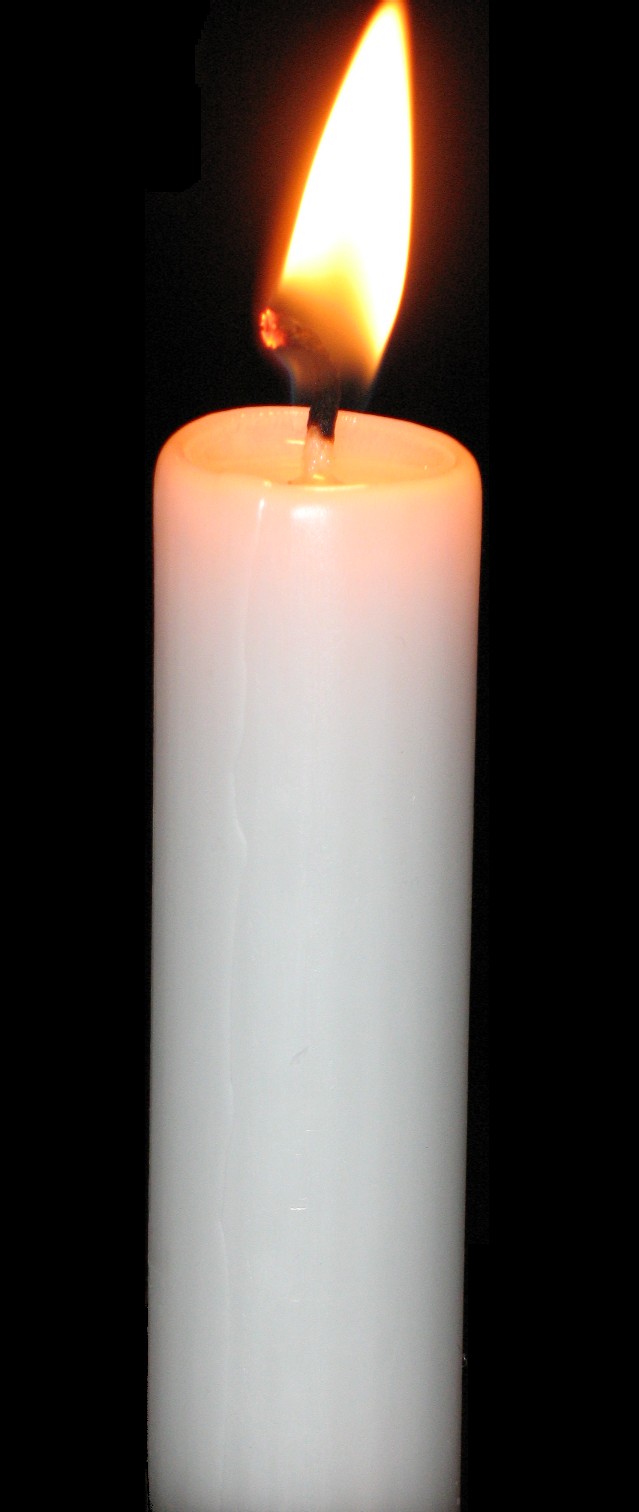|
Plastination
Plastination is a technique or process used in anatomy to preserve bodies or body parts, first developed by Gunther von Hagens in 1977. The water and fat are replaced by certain plastics, yielding specimens that can be touched, do not smell or decay, and even retain most properties of the original sample. Process Four steps are followed in the standard process of plastination: fixation, dehydration, forced impregnation in a vacuum, and hardening. Water and lipid tissues are replaced by curable polymers, which include silicone, epoxy, and polyester-copolymer. The first step of plastination, fixation, frequently uses a formaldehyde-based solution, and serves two functions. Dissecting the specimen to show specific anatomical elements can be time-consuming. Formaldehyde or other preserving solutions help prevent decomposition of the tissues. They may also confer a degree of rigidity. This can be beneficial in maintaining the shape or arrangement of a specimen. A stomach might be ... [...More Info...] [...Related Items...] OR: [Wikipedia] [Google] [Baidu] |
Gunther Von Hagens
Gunther von Hagens (born Gunther Gerhard Liebchen; 10 January 1945) is a German anatomist, businessman, and lecturer. He developed the technique for preserving biological tissue specimens called plastination. Von Hagens has organized numerous '' Body Worlds'' public exhibitions and occasional live demonstrations of his and his colleagues' work, and has traveled worldwide to promote its educational value. The sourcing of biological specimens for and the commercial background of his exhibits has been controversial. Early life and education Hagens was born Gunther Gerhard Liebchen in Alt-Skalden (now called Skalmierzyce) near Ostrowo, Reichsgau Wartheland, in German-annexed Poland. Gerhard Liebchen, his father, was a member of the SS of Nazi Germany. When he was five days old, his parents took him on a six-month trek westwards, to escape from the advancing Red Army and the imminent Soviet occupation. The family lived briefly in Berlin and its vicinity, before finally settlin ... [...More Info...] [...Related Items...] OR: [Wikipedia] [Google] [Baidu] |
Mummy
A mummy is a dead human or an animal whose soft tissues and Organ (biology), organs have been preserved by either intentional or accidental exposure to Chemical substance, chemicals, extreme cold, very low humidity, or lack of air, so that the recovered body does not Corpse decomposition, decay further if kept in cool and dry conditions. Some authorities restrict the use of the term to bodies deliberately embalming, embalmed with chemicals, but the use of the word to cover accidentally desiccation, desiccated bodies goes back to at least the early 17th century. Mummies of humans and animals have been found on every continent, both as a result of natural preservation through unusual conditions, and as cultural artifacts. Over one million Animal mummy, animal mummies have been found in Egypt, many of which are cats. Many of the Egyptian animal mummies are African sacred ibis, sacred ibis, and radiocarbon dating suggests the Egyptian ibis mummies that have been analyzed were from ... [...More Info...] [...Related Items...] OR: [Wikipedia] [Google] [Baidu] |
Embalming
Embalming is the art and science of preserving human remains by treating them with embalming chemicals in modern times to forestall decomposition. This is usually done to make the deceased suitable for viewing as part of the funeral ceremony or keep them preserved for medical purposes in an anatomical laboratory. The three goals of embalming are disinfection, sanitization, presentation, and preservation, with restoration being an important additional factor in some instances. Performed successfully, embalming can help preserve the body for many years. Embalming has a long, cross-cultural history, with many cultures giving the embalming processes religious meaning. Animal remains can also be embalmed by similar methods, though embalming is distinct from taxidermy. Embalming preserves the body while keeping it intact, whereas taxidermy is the recreation of an animal's form often using only the creature's skin, fur or feathers mounted on an anatomical form. It is not required for ... [...More Info...] [...Related Items...] OR: [Wikipedia] [Google] [Baidu] |
Anatomy
Anatomy () is the branch of morphology concerned with the study of the internal structure of organisms and their parts. Anatomy is a branch of natural science that deals with the structural organization of living things. It is an old science, having its beginnings in prehistoric times. Anatomy is inherently tied to developmental biology, embryology, comparative anatomy, evolutionary biology, and phylogeny, as these are the processes by which anatomy is generated, both over immediate and long-term timescales. Anatomy and physiology, which study the structure and function of organisms and their parts respectively, make a natural pair of related disciplines, and are often studied together. Human anatomy is one of the essential basic sciences that are applied in medicine, and is often studied alongside physiology. Anatomy is a complex and dynamic field that is constantly evolving as discoveries are made. In recent years, there has been a significant increase in the use of ... [...More Info...] [...Related Items...] OR: [Wikipedia] [Google] [Baidu] |
Laminitis Plastinate Hc Biovision
Laminitis is a disease of the feet of ungulates, found mostly in horses and cattle involving inflammation of the laminae. Clinical signs include foot tenderness progressing to inability to walk, increased digital pulses, and increased temperature in the hooves. Severe cases with outwardly visible clinical signs are known by the colloquial term ''founder'', and progression of the disease will lead to perforation of the coffin bone through the sole of the hoof or being unable to stand up, requiring euthanasia. Laminae The bones of the hoof are suspended within the axial hooves of ungulates by layers of modified skin cells, known as laminae or lamellae, which suspend the bony column from the hoof wall, contributing to shock absorption during locomotion. In horses, there are about 550–600 pairs of primary epidermal laminae, each with 150–200 secondary laminae projecting from their surface. These interdigitate with equivalent structures attached to the surface of the coffin bone ... [...More Info...] [...Related Items...] OR: [Wikipedia] [Google] [Baidu] |
Cryopreservation
Cryopreservation or cryoconservation is a process where biological material - cells, tissues, or organs - are frozen to preserve the material for an extended period of time. At low temperatures (typically or using liquid nitrogen) any cell metabolism which might cause damage to the biological material in question is effectively stopped. Cryopreservation is an effective way to transport biological samples over long distances, store samples for prolonged periods of time, and create a bank of samples for users. Molecules, referred to as cryoprotective agents (CPAs), are added to reduce the osmotic shock and physical stresses cells undergo in the freezing process. Some cryoprotective agents used in research are inspired by plants and animals in nature that have unique cold tolerance to survive harsh winters, including: trees, wood frogs, and tardigrades. The first human corpse to be frozen with the hope of future resurrection was James Bedford's, a few hours after his c ... [...More Info...] [...Related Items...] OR: [Wikipedia] [Google] [Baidu] |
Paraffin Wax
Paraffin wax (or petroleum wax) is a soft colorless solid derived from petroleum, coal, or oil shale that consists of a mixture of hydrocarbon molecules containing between 20 and 40 carbon atoms. It is solid at room temperature and melting point, begins to melt above approximately , and its boiling point is above . Common applications for paraffin wax include lubrication, electrical insulation, and candles; dyed paraffin wax can be made into crayons. Un-dyed, unscented paraffin candles are odorless and bluish-white. Paraffin wax was first created by Carl Reichenbach#Scientific contributions, Carl Reichenbach in Germany in 1830 and marked a major advancement in candlemaking technology, as it burned more cleanly and reliably than tallow candles and was cheaper to produce. In chemistry, ''paraffin'' is used synonymously with ''alkane'', indicating hydrocarbons with the general formula C''n''H2''n''+2. The name is derived from Latin ''parum'' ("very little") + ''affinis'', meaning ... [...More Info...] [...Related Items...] OR: [Wikipedia] [Google] [Baidu] |
Museum Of Funeral Customs
The Museum of Funeral Customs was a museum located in Springfield, Illinois, featuring exhibits on American funerary and mourning customs. The museum was near Oak Ridge Cemetery, the site of Abraham Lincoln's tomb. Collections at the museum included a re-created 1920s embalming room, coffins and funeral paraphernalia from various cultures and times, examples of post-mortem photography, and a scale model of Lincoln's funeral train. The museum hosted tours and special events, and provided resources to scholars who were researching funeral customs. A gift shop provided books and funeral-related gifts, including coffin-shaped keychains and chocolates. It was closed in March 2009 due to poor attendance and handling of the museum's trust fund. The contents of the collection were transferred to the Kibbe Hancock Heritage Museum in Carthage, Illinois Carthage is a city in and the county seat of Hancock County, Illinois, United States. Its population was 2,490 as of the 2020 cen ... [...More Info...] [...Related Items...] OR: [Wikipedia] [Google] [Baidu] |
Formalin
Formaldehyde ( , ) (systematic name methanal) is an organic compound with the chemical formula and structure , more precisely . The compound is a pungent, colourless gas that polymerises spontaneously into paraformaldehyde. It is stored as aqueous solutions (formalin), which consists mainly of the hydrate CH2(OH)2. It is the simplest of the aldehydes (). As a precursor to many other materials and chemical compounds, in 2006 the global production of formaldehyde was estimated at 12 million tons per year. It is mainly used in the production of industrial resins, e.g., for particle board and coatings. Formaldehyde also occurs naturally. It is derived from the degradation of serine, dimethylglycine, and lipids. Demethylases act by converting N-methyl groups to formaldehyde. Formaldehyde is classified as a group 1 carcinogen and can cause respiratory and skin irritation upon exposure. Forms Formaldehyde is more complicated than many simple carbon compounds in that it ... [...More Info...] [...Related Items...] OR: [Wikipedia] [Google] [Baidu] |
Ancient Egypt
Ancient Egypt () was a cradle of civilization concentrated along the lower reaches of the Nile River in Northeast Africa. It emerged from prehistoric Egypt around 3150BC (according to conventional Egyptian chronology), when Upper and Lower Egypt were amalgamated by Menes, who is believed by the majority of List of Egyptologists, Egyptologists to have been the same person as Narmer. The history of ancient Egypt unfolded as a series of stable kingdoms interspersed by the "Periodization of ancient Egypt, Intermediate Periods" of relative instability. These stable kingdoms existed in one of three periods: the Old Kingdom of Egypt, Old Kingdom of the Early Bronze Age; the Middle Kingdom of Egypt, Middle Kingdom of the Middle Bronze Age; or the New Kingdom of Egypt, New Kingdom of the Late Bronze Age. The pinnacle of ancient Egyptian power was achieved during the New Kingdom, which extended its rule to much of Nubia and a considerable portion of the Levant. After this period, Egypt ... [...More Info...] [...Related Items...] OR: [Wikipedia] [Google] [Baidu] |
Gunther Von Hagens 2
Gundaharius or Gundahar (died 437), better known by his legendary names Gunther () or Gunnar (), was a historical King of the Burgundians in the early 5th century. Gundahar is attested as ruling his people shortly after they crossed the Rhine into Roman Gaul. He was involved in the campaigns of the failed Roman usurper Jovinus before the latter's defeat, after which he was settled on the left bank of the Rhine as a Roman ally. In 436, Gundahar launched an attack from his kingdom on the Roman province of Belgica Prima. He was defeated by the Roman general Flavius Aetius, who destroyed Gundahar's kingdom with the help of Hunnish mercenaries the following year, resulting in Gundahar's death. The historical Gundahar's death became the basis for a tradition in Germanic heroic legend in which the legendary Gunther met his death at the court of Attila the Hun (Etzel/Atli). The character also became attached to other legends: most notably he is associated with Siegfried/Sigurd and ... [...More Info...] [...Related Items...] OR: [Wikipedia] [Google] [Baidu] |
Human Body
The human body is the entire structure of a Human, human being. It is composed of many different types of Cell (biology), cells that together create Tissue (biology), tissues and subsequently Organ (biology), organs and then Organ system, organ systems. The external human body consists of a human head, head, hair, neck, torso (which includes the thorax and abdomen), Sex organ, genitals, arms, Hand, hands, human leg, legs, and Foot, feet. The internal human body includes organs, Human tooth, teeth, bones, muscle, tendons, ligaments, blood vessels and blood, lymphatic vessels and lymph. The study of the human body includes anatomy, physiology, histology and embryology. The body Anatomical variation, varies anatomically in known ways. Physiology focuses on the systems and organs of the human body and their functions. Many systems and mechanisms interact in order to maintain homeostasis, with safe levels of substances such as sugar, iron, and oxygen in the blood. The body is st ... [...More Info...] [...Related Items...] OR: [Wikipedia] [Google] [Baidu] |


